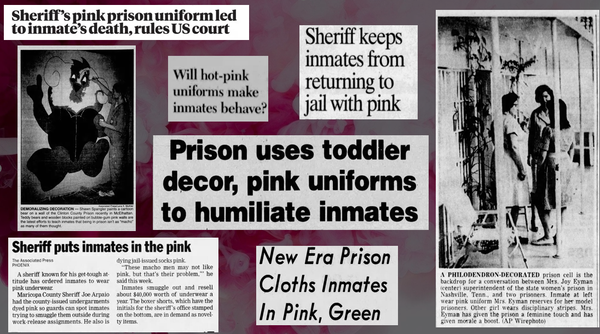Incarcerated Workers on the Frontline of the Bird Flu (H5N1) Response
What you should know about the vulnerability of incarcerated people, especially workers, to the Avian Influenza (H5N1).
Front Line Responders
When slavery was outlawed in the U.S., the 13th amendment included a loophole to allow for the enslavement and forced labor of persons convicted of a crime. Prisons assign incarcerated people to work regardless of their consent and punish those who refuse to work. Prison work programs are often agriculturally focused, including assignments to work with livestock (poultry, cows, swine etc.), food processing, and slaughterhouse operations, putting them at greater risk of contracting Avian Influenza (H5N1) aka the bird flu.
As with essentially every other type of emergency and disaster in the U.S., incarcerated workers have also been on the front line of response to the Avian Influenza crisis. In 2022, Colorado reported the first person in the U.S. to contract Avian Influenza, an incarcerated man. At the time, he was working at a poultry farm that raised about 58,000 broiler breeder chickens. When the bird flu was found to be present at the farm, the man was assigned to poultry removal and disposal operations for the flock during which he was exposed and contracted the bird flu. His only reported symptom was fatigue and he was treated with the antiviral oseltamivir.
In 2015, the Indiana Department of Corrections (IDOC) reported that 51 incarcerated people and four staff members had been trained to euthanize large populations of fowl “if in the event Indiana were to experience an outbreak.” The incarcerated workers were reported to have been fit-tested for respirators and were trained to “remove chickens from cages and transfer them to an enclosed cart used to asphyxiate the birds.” In 2016, the IDOC reported that 68 incarcerated workers responded to an outbreak in southern Indiana and eradicated approximately 400,000 infected fowl.
Prisons have also been used as test sites to monitor Avian Influenza. In 2006, incarcerated men at an Alaskan prison work camp, Point MacKenzie Correctional Farm, were trained to identify the signs of bird flu while the safety officer was trained to collect samples from the flocks for testing. The camp operates as a farm where about 100 men are incarcerated and tasked with raising chickens and turkeys to be butchered to feed the state’s prison population.
Implications
According to the Centers for Disease Control and Prevention (CDC), “H5N1 bird flu in people has been mild to severe, including death.” Since February 2024, there have been 70 identified cases of individuals in the U.S. being infected with bird flu, with one death. Globally, there have been 954 cases of human infection with avian influenza (H5N1), with 464 deaths (case rate fatality of 49%). Furthermore, Avian Influenza has the potential to mutate and become more contagious.
Incarcerated people are a highly vulnerable population in regard to health risks. Prisons, jails, and detention facilities are designed and operated as crowded environments, creating high risk for the spread of infectious disease. Incarcerated populations have disproportionately high rates of chronic health problems but do not have equitable access to quality healthcare compared to the general population.
Are systems responding? Are they prepared?
There remains extremely limited to no public information available about how prison agriculture operations are responding to the threat of avian influenza, including their preparedness efforts to protect incarcerated workers. When workers are exposed, they require monitoring and testing. In May of 2024, a dairy farm worker in Texas tested positive for H5N1 and subsequently about 350 farm workers had be to be closely monitored. Are states prepared to support the monitoring of hundreds of incarcerated workers? What about cities with jails that also operate small farming operations? Are local health systems prepared for outbreaks?
In every state where incarcerated workers are engaged with livestock operations in any capacity, they are engaged with managing the ongoing avian flu crisis. However, it is unknown what training, if any, incarcerated workers are receiving to identify signs of H5N1 in livestock or if they have been informed of the risks of exposure.
What should be done?
In the short term, the agencies and departments responsible for managing prisons and jails must be held accountable for how they are preparing and responding to the risk of Avian Influenza and outbreaks. Such efforts should be transparent to the incarcerated as well as to the public and should be informed by expert knowledge across agriculture, public health, and emergency management.
In the long-term, these crises should require that we critically evaluate our policies and practices regarding prison work programs. In emergencies and disasters, it is common to turn to incarcerated labor because they have limited rights, including to compensation and worker protections. They do not have the choice to refuse to work regardless of the risk landscape. Such practices are exploitative and are detrimental to the health and mental health of incarcerated persons, their families, and communities.


